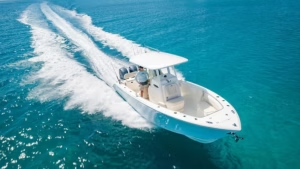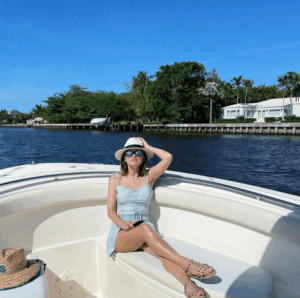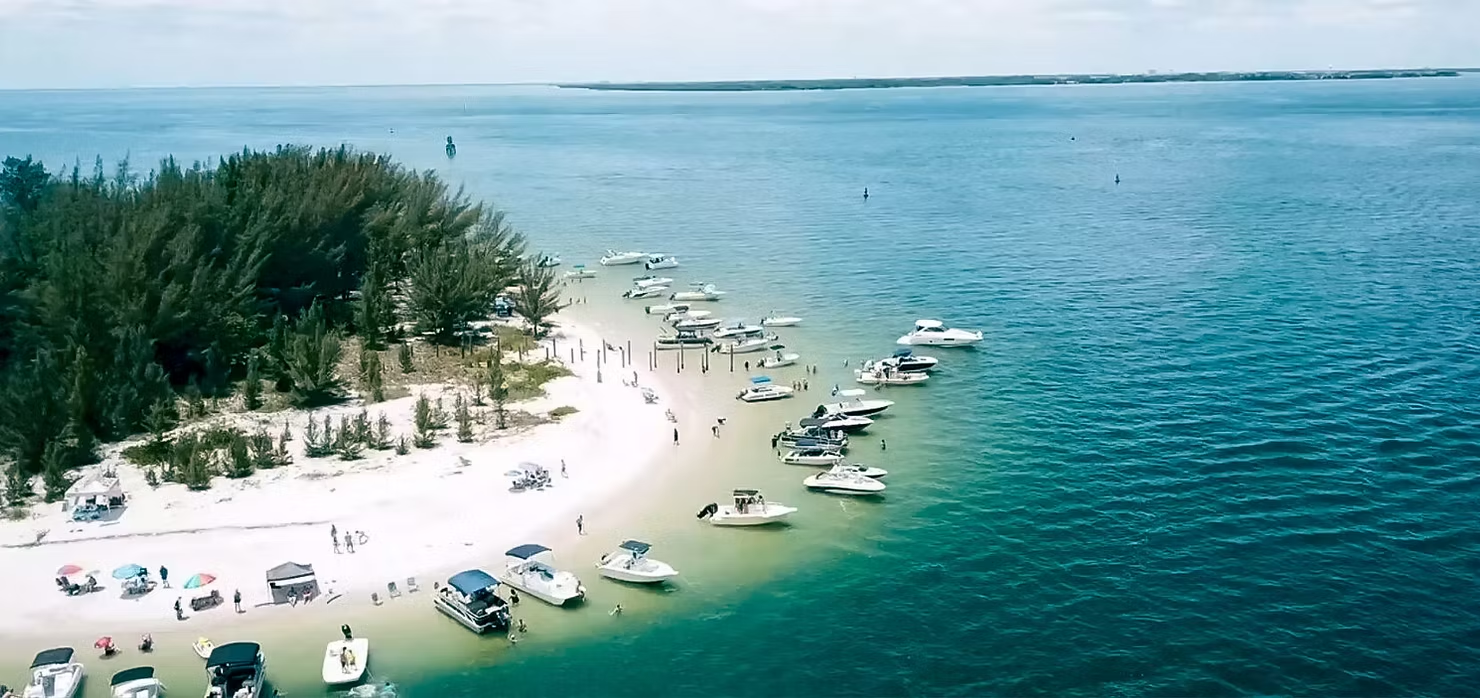
As the seasons shift, the importance of navigating shallow waters with precision cannot be overstated. Understanding the nuances of your boat’s journey through the shallows is not merely a skill but a responsibility.
In this guide, we delve into the essential tips and practices to ensure every boat ride remains both safe and seamless, emphasizing the critical significance of recognizing when your vessel is in shallow water.
Tidal Treasure Hunt
Imagine shallow waters as a hidden treasure trove awaiting discovery. During low tides, the water’s retreat reveals hidden sandbars, submerged obstacles, and potential hazards. Plan your journeys to coincide with these tidal fluctuations to ensure a safer and more revealing voyage. Exercise caution in areas that appear potentially hazardous with fallen trees or submerged debris, especially during high tides.
Most people know that the tide is responsible for higher and lower levels of water, but they don’t fully understand the mechanics behind this phenomenon or how to navigate a changing tide. In this guide, we’ll teach you all the basics.
Know Your Draft
Every ship has its secrets, and one of them is its draft – the distance from the waterline to the deepest part of the hull. In simpler terms, it measures how much of the boat is submerged in the water. Understanding a boat’s draft is crucial for various reasons, particularly when navigating different water depths. Member Services has all the info you need about the draft of your boat, tides and other helpful tips for local navigation.
FYI: Draft is typically measured from the waterline to the lowest point on the boat’s hull, often called the keel. The keel is the structural backbone of the boat, running along the bottom from the bow (front) to the stern (back).
Go Slow, Go Low
In shallow waters, patience is more than a virtue; it’s a navigational necessity. Tidal movements not only influence water depth but also the speed at which it travels. Going slow during low tide is not just a precaution; it’s a strategic maneuver. Reduced speeds allow for heightened visibility of the water’s changing topography, minimizing the risk of grounding and ensuring a safer navigation through shallow areas, and also lets you savor the journey.
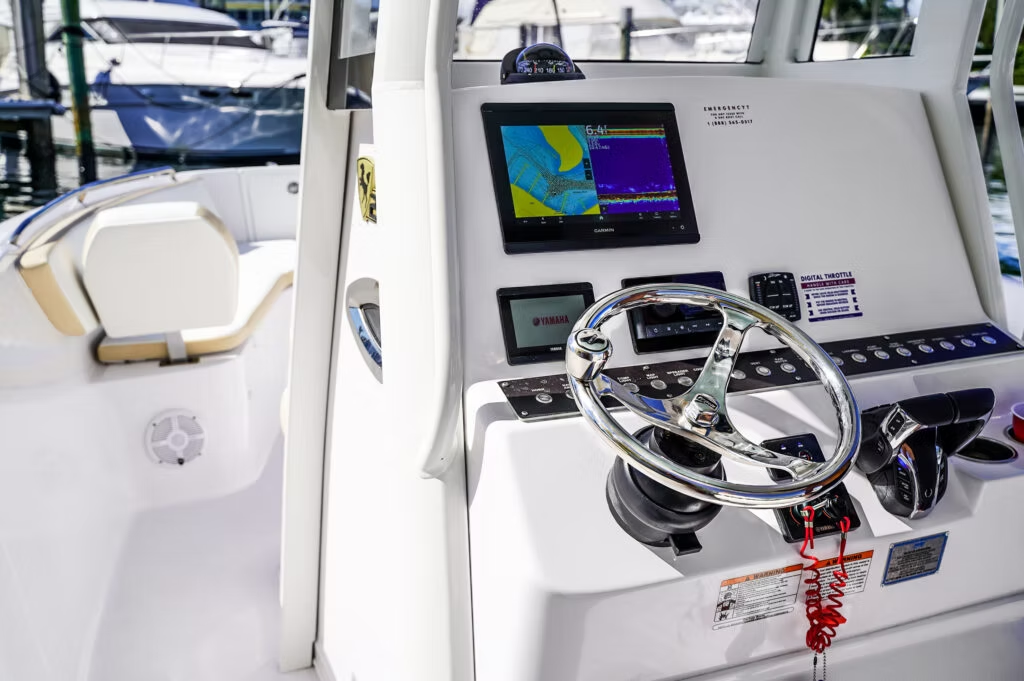
GPS and Onboard Tech
Navigating the ever-changing dynamics of tides and shallow waters demands a keen understanding of your onboard technology. As a boat club committed to ensuring our members’ safety and confidence on the water, we emphasize the critical role that familiarity with onboard technology plays in enhancing your boating experience. From GPS systems that guide you through shifting tides to depth finders that help navigate shallow waters, each piece of technology is a valuable tool.
During your new member orientation we will go over all the tech and features on board, but for a quick rundown of what you’ll learn check out – 5 Things to Learn at New Member Orientation
Eyes on the Horizon
Keep a keen eye on the horizon to spot subtle changes in water color and ripples. One of the subtle yet invaluable cues lies in the color of the water and the nuanced changes in ripples. Shallow areas often reveal themselves through a distinct alteration in water color—transitions from deep blues to lighter hues or even a more transparent quality. These visual indicators are nature’s way of signaling variations in depth.
FYI: Brown, brown, run aground. White, white, you just might. Blue, blue, sail on through. Green, green, nice and clean.
Equally important are the subtle ripples on the water’s surface, which can betray the presence of sandbars or shallower regions. Observing these minute changes in the water’s texture allows astute boaters to anticipate shallows before they become navigational challenges.
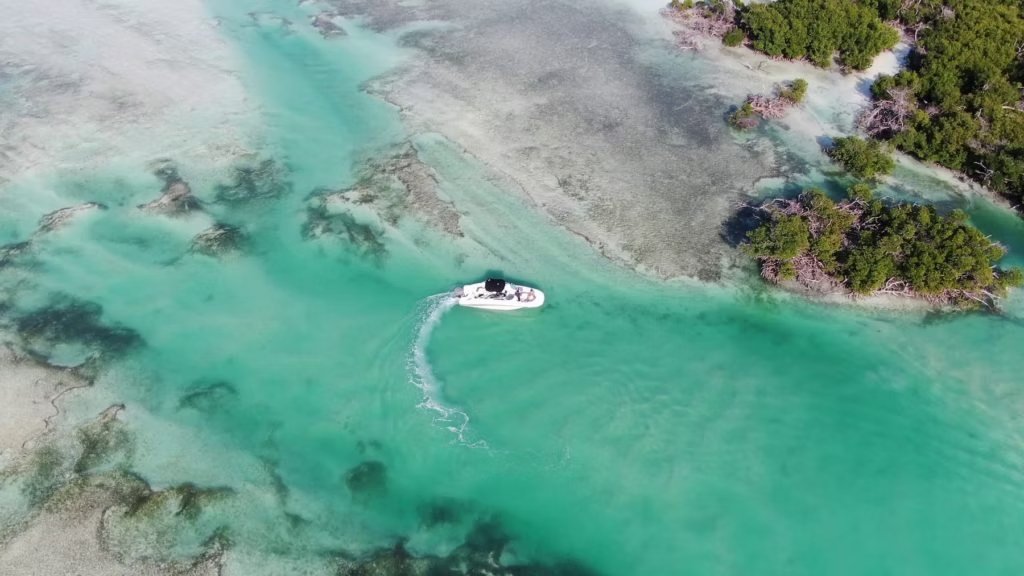
Learn from Your Local Member Services
Local knowledge is a captain’s best friend. When you need some guidance, our Member Services is here to offer insights about the best routes, hidden gems, and potential challenges in shallow areas.
If there’s ever a feature or function of your onboard tech you’re uncertain about, remember that our Member Services are here to assist. Whether you need a refresher on reading your depth sounder or decoding the intricacies of your GPS, our experts are ready to provide the guidance you need. Your safety and confidence are our top priorities, and we’re here to support you every nautical mile of the way.
Additional Shallow Water Navigation Tips
- Keep a Safe Distance from Shore
- Avoid Disturbing Seagrass Beds
- Be Mindful of Propeller Depth
- Use Polarized Sunglasses
- Stay Within Marked Channels
- Have a Spotter on Deck
- Practice Maneuvering Skills
- Plan Your Route Ahead
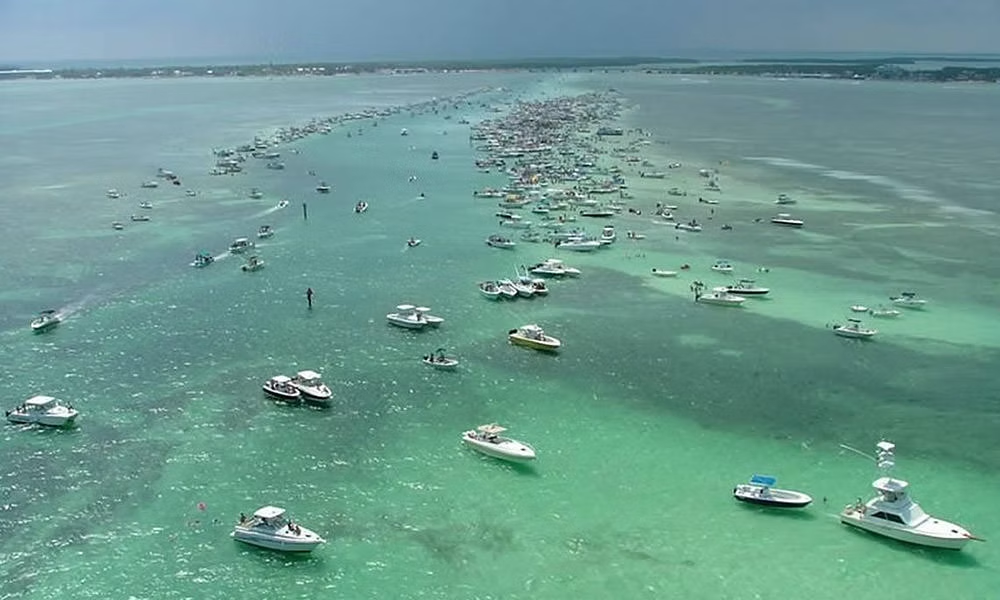
Navigating Shallow Waters with Knowledge and Caution
Navigating shallow waters is all about striking a balance between excitement and responsibility. Whether you’re an experienced boater or a novice explorer, understanding the nuances of shallow water boating is key to a smooth and enjoyable journey.
At Gulfstream Boat Club, we encourage our members to approach our local waters with a blend of knowledge, caution, and an appreciation for the unique challenges they present. Keep safety at the forefront, enjoy the beauty of your surroundings, and make the most of every boating experience. Here’s to safe and happy cruising!

